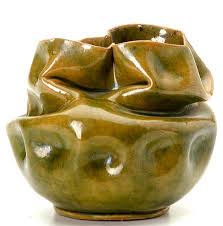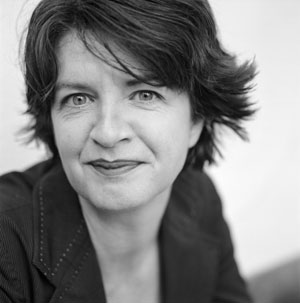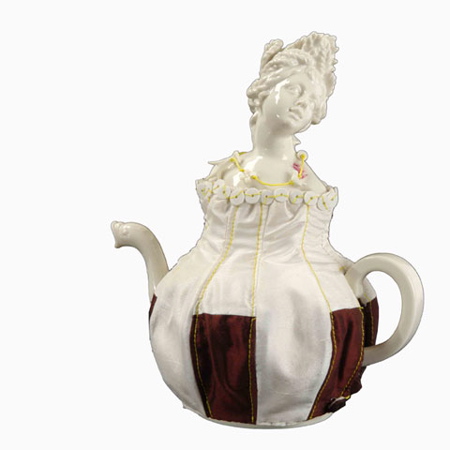


Panagiotis Harry Voulkopoulos, better known as Peter Voulkos, was born on January 29, 1924 in Bozeman, Montana. He was the third child of five born to his Greek immigrant parents. Just after graduating from Gallatin County High School, he was drafted into the United States Army, where he served for three years. Eight years after leaving the army, he married Margaret Cone. Peter’s groundbreaking works are best known for their unique visual weight and somewhat bizarre appearances. Seen in this picture with John Balistreri, Voulkos was fond of hammering, smashing, and gouging large holes in his pieces, and they clearly convey his passion and energy. He created a large number of plates, ice buckets, tea bowls, prints, paintings, and bronzes, most of which are non-conventional pieces. His King’s Chamber is a perfect example of this, though most of his stacks shared many common elements with this one. While most of his later work is wood-fired, his earlier projects were glazed, painted, and even cast in bronze.
It is likely that his heritage had a great impact on his creative mind, as much of his work is reminiscent of traditional Greek pottery. He studied painting and ceramics at Montana State University and earned an MFA from the California College of the Arts. He then founded the ceramics department at Otis College of Art and Design, then did the same at the University of California, Berkeley, where he proceeded to teach from 1959-85. He and Rudy Autio became the Archie Bray Foundation’s first resident artists. Receiving an astonishing number of awards and medals in his life, Peter was a highly decorated man. Most of Peter’s artwork is more sculptural than functional. Even with simple things like plates he defied conventional expectations by creating something that you almost couldn’t use even if you tried.
On February 16, 2002 he died of a heart attack after demonstrating his skill to a live audience during a college ceramics workshop. His artwork can be found in museums worldwide, including the National Gallery in Melbourne, Australia, the Victoria and Albert Museum in London, England, the Smithsonian Institution in Washington D.C., and the Kyoto National Museum of Modern art, to name just a few.
Check out these links for more information on Peter Voulkos!
http://www.artnet.com/awc/peter-voulkos.html
http://www.voulkos.com/frameportfolio.html
http://en.wikipedia.org/wiki/Peter_voulkos
http://www.voulkos.com/petebio.html











 Pretty much all of Kristen’s work is soda fired, which really emphasizes her form with its addition of shadows.
Pretty much all of Kristen’s work is soda fired, which really emphasizes her form with its addition of shadows.







































